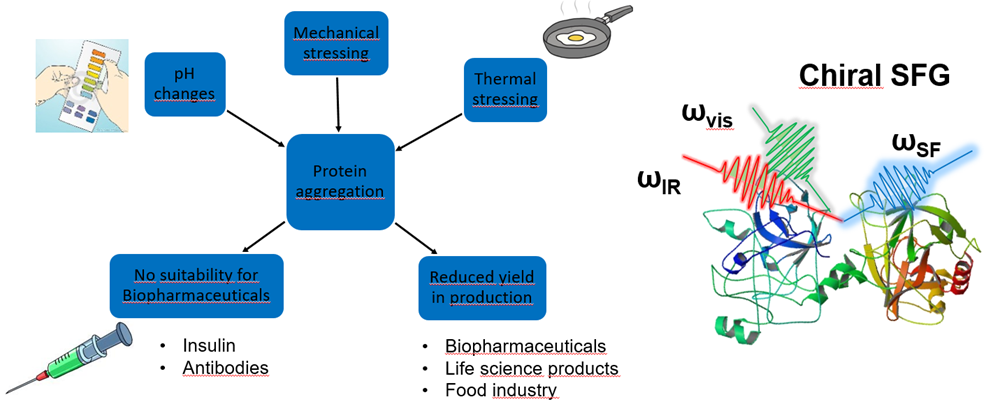Proteins at Interfaces
In situ investigations of structural changes of biomolecules at the interface and under mechanical stress
Participating project in Priority Programme (SPP) 1934 DispBiotech

Proteins structure, interfacial properties, and dynamical behavior are of relevance in a wide range of applications. For instance, in the food industry which proteins are commonly used as emulsifiers, their long term stability is of concern. In pharmaceutical industries, the degradation of biomolecules during processing and storage is a frequent problem. In this project, we explore the stability and resilience of biomolecules, like proteins, at the interface and in bulk solution under various chemical, interfacial and mechanical stresses.
To shade light on the protein structure and dynamic at the interface we utilize SFG (sum frequency generation) spectroscopy, which enables us to gain information about molecular composition, orientation and charge of proteins the surfaces and interfaces. SFG works by overlapping a fixed visible (800 nm) and a tunable IR beam at the interface to generate an SFG beam, whose frequency is the sum of both incoming beams. By changing the polarization of the beams, we can selectively probe chirality of the interfacial molecules. Chiral SFG is applied to investigate secondary structures of proteins at the interface.
Recent publications:
- Guckeisen, T., Hosseinpour, S., & Peukert, W. (2019). Isoelectric points of proteins at the air/liquid interface and in solution. Langmuir, 35(14), 5004-5012. https://doi.org/10.1021/acs.langmuir.9b00311